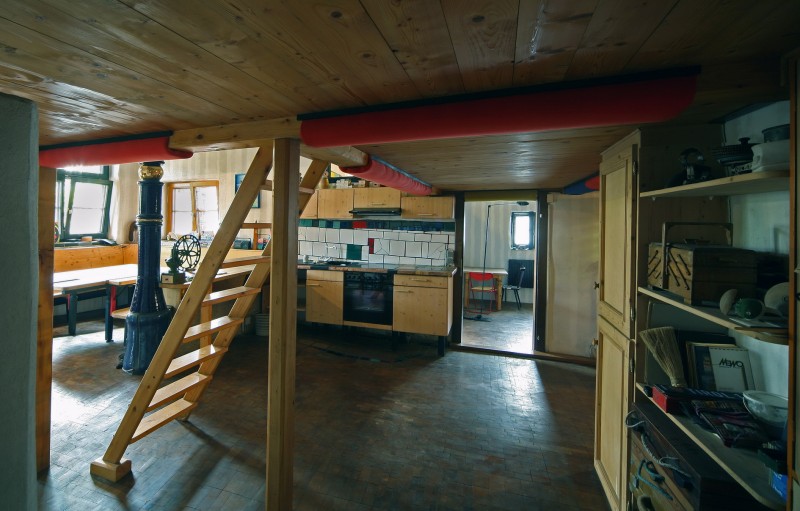Hundertwassers Dachwohnung im KunstHausWien
Open Image GalleryHundertwasser's apartment in the KunstHausWien
1991
Alfred Schmid
Alfred Schmid
Hundertwasser's Places of residence
When Joram Harel, Hundertwasser's friend and manager, was looking for a suitable location for a permanent exhibition of Hundertwasser's works in Vienna at the end of the 1980s, he came across two interconnected, empty buildings of the former Thonet Brothers furniture factory from 1892 in the third district, which seemed ideally suited to the planned purpose. He succeeded in gaining BAWAG (Bank für Arbeit und Wirtschaft) as a partner for the purchase of the building and its conversion. The remodelling, which was supervised by Hundertwasser's friend, the architect Peter Pelikan, was carried out without any problems and in a relatively short time, from 1989 to 1991. Hundertwasser added a pillar-supported porch to the street side, which serves as the entrance. A staircase was added on the courtyard side, and a much-frequented cafeteria, lavishly furnished with plants, was also accommodated here under a glass roof. The KunstHausWien has a total exhibition space of 4000 square metres on four floors. The two upper floors are dedicated to temporary exhibitions of international artists, while the two floors below permanently display a collection of Hundertwasser's own paintings as well as prints, tapestries, stamp designs and various of his architectural models. Hundertwasser set up a small granny flat above the exhibition rooms. After he had lived in Otto Wagner's former studio in Spiegelgasse in the first district for many years during his stays in Vienna, it became his Viennese neighbourhood where he could live and work. A door led from the living room into the dense vegetation of a roof garden, where he loved to spend time and where he had also planted fruit trees.
Wieland Schmied, in: Hundertwasser's Paradises. The Hidden Life of Friedrich Stowasser, Munich 2003
